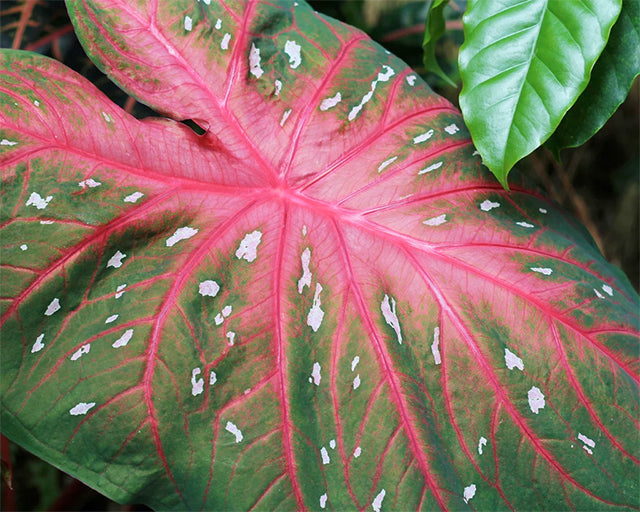
Caladiums! All about Caladium Bulbs
Shake up your style with a contemporary twist of tropical colour, courtesy of leafy, lush and exotic Caladiums! These exotic, almost Jurassic-looking plants with intricate veining, bright colour bursts or funky speckled markings prove that foliage can be every bit as exciting as flowers, offering a trendy modern alternative to traditional bedding displays!
Buy your Caladium bulbs in our webshop here
Putting on their best show in a partially shaded space, Caladiums are just the thing for livening up a dull part of the garden. You can turn an enclosed courtyard, shaded patio, or any dimly-lit nook into a lush, tropical chill-out zone with a packed-out planting scheme of these colourful, vibrant plants.
Throughout summer they continuously unfurl their lovely lustrous leaves and soon pad out their space. Incorporate them into bedding and patio displays, or go for a full-blown jungle vibes and plant them under palms for a shock of ground-level colour. Forming bushy mounds of heart-shaped leaves, they effortlessly create what looks like an expertly designed planting scheme wherever they’re put.
You can also grow Caladiums as house plants. If you want to make the most of a warm, bright conservatory or you have a sleek modern home interior which could do with a splash of colour, a jazzy Caladium in a pot should do the trick. Whether you choose to grow them indoors or out, there’s no doubt that a punchy summer display of Caladiums are total crowd pleasers.
How to grow Caladiums
The key to success with Caladiums lies in replicating the tropical conditions they originate from, as closely as possible. The good news is – this can be done wherever you wish to grow them, with a little care and attention to their basic needs.
First up, despite the bright and jazzy appearance of these plants, they don’t require a lot of light to thrive. In fact, too much direct sunlight is not recommended at all for Caladiums – instead dappled sunshine, or exposure to the gentle rays of the morning or evening sun, would be ideal. Some varieties are more light-tolerant than others, but on the whole – bright sunshine runs the risk of searing brown spots on the leaves of your Caladiums, or causing a bleached effect, fading out their trademark bright colours. Therefore, it’s safest to choose a partially or fully shaded growing spot which closely mimics their natural growing conditions on the rainforest floor.
If you have a tricky north or east facing area in your garden that isn’t touched by the sun for most of the day, and is crying out for an injection of bright colour – then Caladiums can be the perfect solution!
Caladiums are thirsty plants and prefer plenty of moisture in the soil. They will happily grow under trees and larger shrubs that give the required shade, just take care that they’re not planted right in the thick of the tree’s roots, in fierce competition for water in the soil as they may not get their required moisture level. Regular watering will ensure plenty of luscious leaves, and for a low-maintenance way to help create the perfect conditions, a thick mulch of compost or bark chippings can help to lock in moisture and provide the fertile, damp soil that Caladiums crave.
These architectural plants are also ideal for growing in containers. They form a lush mound of leaves, holding their shape well, and won’t sprawl or droop. It’s easy to monitor the moisture levels of any pot grown plant by gently tipping the pot and feeling the weight. Do take note, though – any kind of waterlogging won’t do these tubers any favours at all, so any boggy areas are best avoided. If growing in containers, do ensure your pots and planters have holes in the bottom to provide sufficient drainage. Once you have a moist but well-drained growing medium, your tubers will be perfectly happy and will reward you with vigorous growth!
When to plant Caladium bulbs
When choosing the best time to plant out your Caladium tubers, bear in mind that these tropical beauties require plenty of consistent warmth. When planting outside, the safest option is to wait until late spring when any risk of frost has passed in your area, by which time the soil should have warmed up and a consistent level of heat can be expected. You can also get them going slightly earlier, provided this is in a warm location like a greenhouse, conservatory or in your home.
How to plant Caladium bulbs
When your Caladiums arrive, they will be brown with a rough, knobbly side which are the growing points, and a smoother side – they should be planted with the growing points facing upwards. Plant tubers around 5cm deep, it is best to start them off them in individual 6" pots. For the growing medium, any rich potting compost will do – you can up the organic matter levels further by mixing in some bark chips (such as Orchid compost), or perhaps moss.
Caladiums are tropical plants and must be started off in warm indoor conditions in the spring - they require fairly consistent temperatures of around 20C or more to come out of dormancy and can be slow to get going, it’s reasonable to expect them to take 6-8 weeks from planting for the first leaves to emerge, so be patient and do resist the temptation to overwater while they’re in their dormant state. When foliage begins to emerge, you’ll notice the surrounding soil or compost begin to dry out, so you can up the water levels then. Once your Caladium bulbs have sprouted a few leaves and when the outdoors temperatures are around 20C, they can be transferred outside into a sheltered, shady part of the garden.
Caladiums – quick planting guide:
- Plant your Caladium bulbs in spring and grow on in warm indoor conditions until they have sprouted;
- Caladium bulbs require consistent temperatures of around 20C or more to come out of dormancy, they can take around 1-2 months to sprout;
- Plant around 5cm deep with the side with 'eyes' facing upwards;
- Space the bulbs 15-20cm apart;
- Water in from above after planting and repeat when soil appears to be dry on the surface;
- Tropical bulbs can be transferred outside from May onwards once leaves have sprouted and when the temperatures are warm.
Caladium aftercare and storing the bulbs
Keep an eye on the weather forecast as from early September as Caladiums are best brought under cover before any hint of frost to protect the tuber from any damage. They are perennial, so you can lift the tubers and store them over the winter for planting again the following spring. Simply cut back any foliage then lift the tubers gently and leave to dry off for a week or so. Then, shaking off any loose soil, you can store them in trays of dry compost, or wrapped in a layer of newspaper, in any dry, dark and frost-free place. A garden shed or garage would be an ideal location to keep them snug through the winter. Those grown in pots can be moved into your home to enjoy indoors as the cold season sets in.
Growing Caladiums as houseplants
With excellent tolerance to lower light levels, they make a fabulously exotic houseplants! They will relish the consistently warm atmosphere your home and can be encouraged to stay in leaf for far longer than those grown outdoors. A windowsill would be an ideal location, provided it is north, east or west facing and doesn’t become a sun-trap at any time of day. Alternatively, a shelf, counter top or a small table near to a window will be a great spot for your Caladium plant.
It’s worth noting that the water consumption of your Caladium will be relative to the light levels it receives. The number one mistake people make with houseplants is overwatering – they usually need less than you’d think! Water consumption varies hugely, depending on the plant’s stage in its growing cycle, and the light levels it’s currently exposed to. A plant will need much more in spring and early summer when days are lengthening and it’s rapidly putting out fresh foliage than in the dark days of winter when it is largely dormant. This applies to houseplants too which still rely on natural light through the window which contains the required red and blue elements of the light spectrum. Bear in mind that artificial light is largely yellow, so won’t provide everything your Caladium needs.
The compost of an indoor-grown Caladium should be kept damp, but they shouldn’t stand in water – good drainage is key! It’s best to water sparingly, a good way to check is to dip a finger in to the compost and if it’s damp enough, particles of compost should stick to your finger. If it feels dry to the touch, then go ahead and water.
In their natural growing conditions in South and Central America, Caladiums are used to humidity levels of 50%, so ideally you need to replicate this in an indoor environment. You’ll be pleased to hear that there’s plenty of creative ways to do this! Carefully choose where you locate your plants, first of all. The kitchen is often the hub of any home, and always has plenty of moisture in the air from cooking and boiling the kettle. Why not use this space to create a vibrant display of potted Caladiums that will be a talking point for any visitors, and a colourful backdrop to family mealtimes?
Alternatively, the bathroom provides ample humidity to keep these rainforest plants happy – imagine chilling in the bath amongst your own personal jungle of lush foliage! You can grow Caladiums in other areas of the house too. A handy trick to keep humidity levels high in other areas of your home includes using a mister or spray bottle – a good spritz daily will keep your Caladium blissfully happy. For a lower maintenance option, a shallow saucer of water, perhaps with some ornamental pebbles, provides the same effect. As the water gently evaporates, it provides a little extra humidity to help it along. And, if you’re a Caladium enthusiast who’ll stop at nothing to keep your precious specimens happy, a room humidifier can be bought relatively inexpensively and will ensure optimum conditions allowing you to monitor levels and keeping them consistent.
Top tips for growing Caladiums indoors
- Turn your pots round 90 degrees each week to ensure avoid any risk of plants becoming one-sided or leggy, over time. Foliage will always grow towards the light, so regular turning means you’ll maintain a bushy, even habit for your Caladium plant;
- Save rainwater to water your Caladiums, they much prefer it to tap water and this will help them to put on their best performance;
- Caladiums become dormant for winter – cut back old foliage at the end of the season to make way for fresh new growth in spring.
Caladiums in brief
- Low maintenance plants, grown from bulbs
- Long-lasting foliage colour
- Thrives in full shade or partial shade
- Ideal for patio containers and borders
- Suitable for growing as houseplants
- Prefers a moist but well-drained soil which doesn’t become boggy
- Tender perennials, require winter storage
- Plant under cover in spring then move outside after risk of frost has passed
- Height up to 50-60cm. Spread 50-60cm
Inspired to give these wonderful foliage plants a try?
Take a look at our full range of colourful Caladiums here!




































































































































































































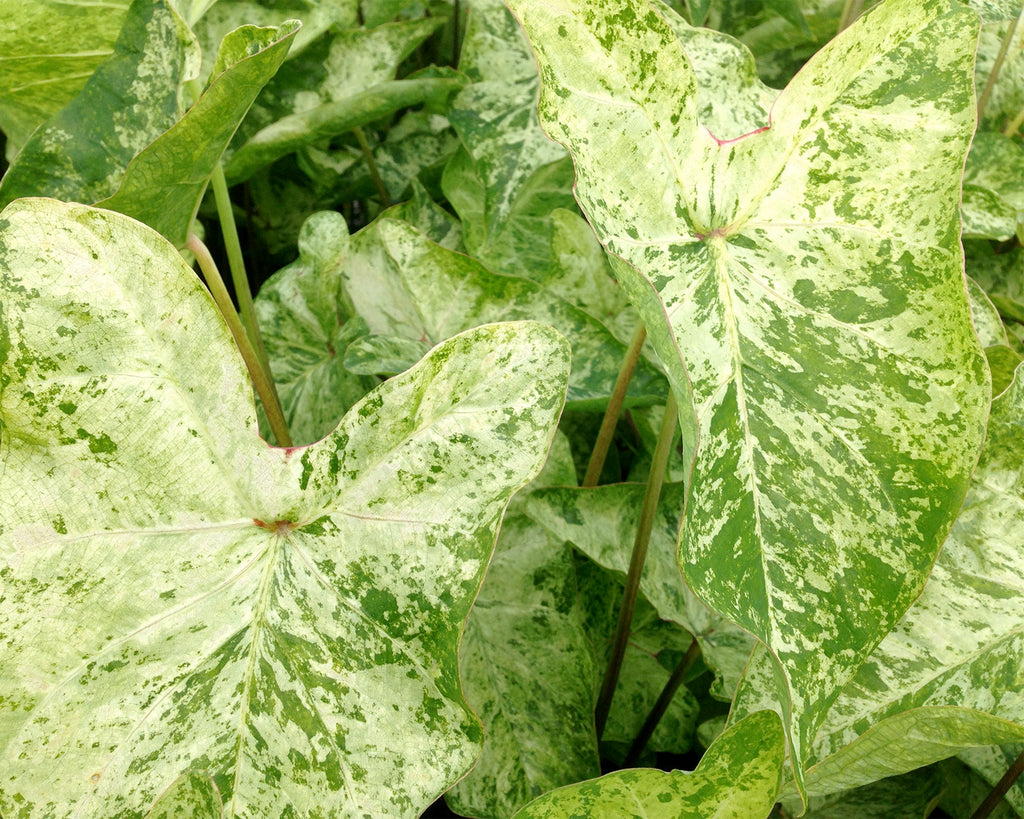
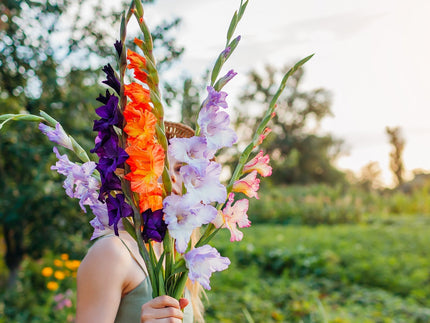
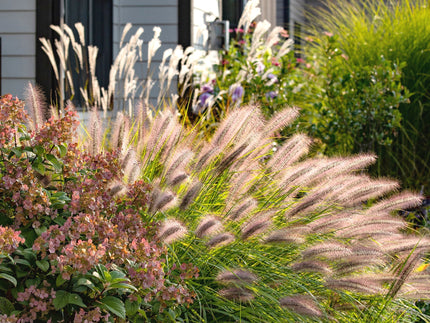
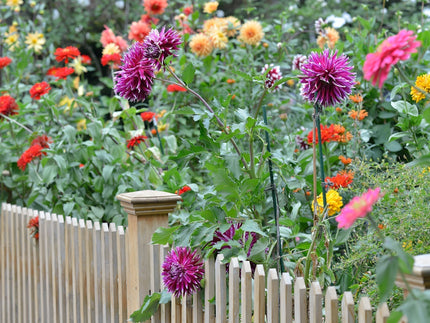
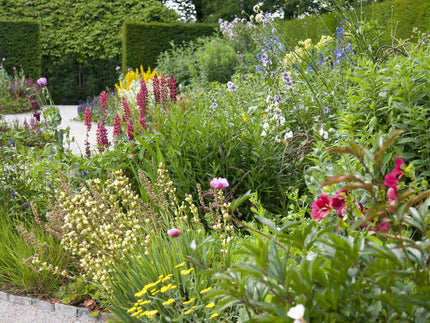
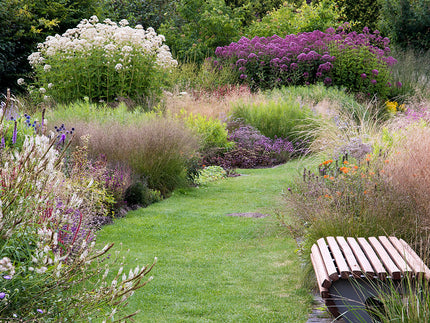
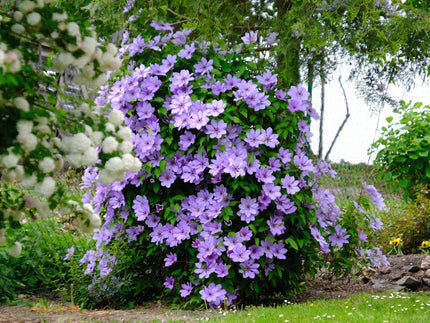


6 comments
I want to plant my caladiums in pots outdoors. How many bulbs should I plant per pot.
Thank you
Hi i have a few flower pods growing in the middle of my large caladium plant can i ask if you just leave them or cut them back to keep the other leaves strong .
Hope this makes sense as i can find any information on line about this thank you for your time Sue.
Thank you so much for this Info. I have just got my first miss muffet caladium and I am now obsessed!
Great blog 👍
Received my order in perfect condition and just read the planting details on line- my you have covered everything. I only hope my three Caladium Rosebuds come up to that standard, I hope they become a talking point.